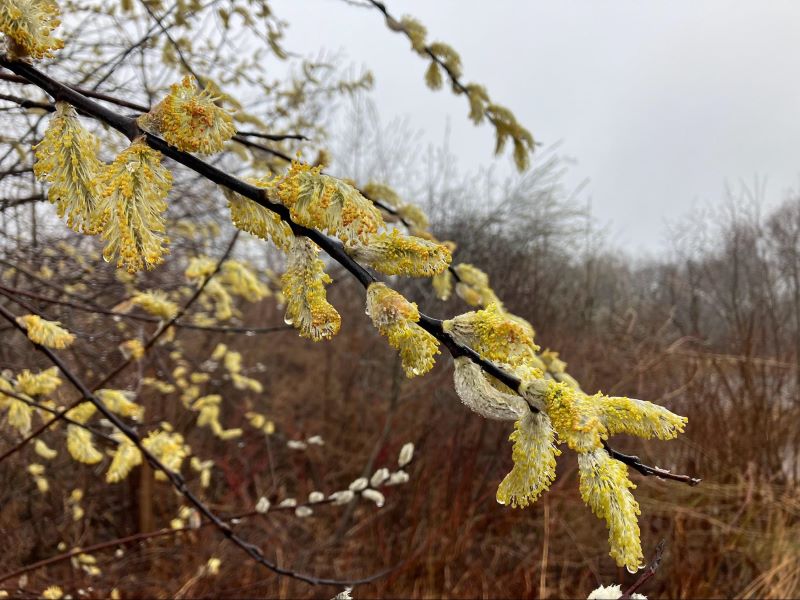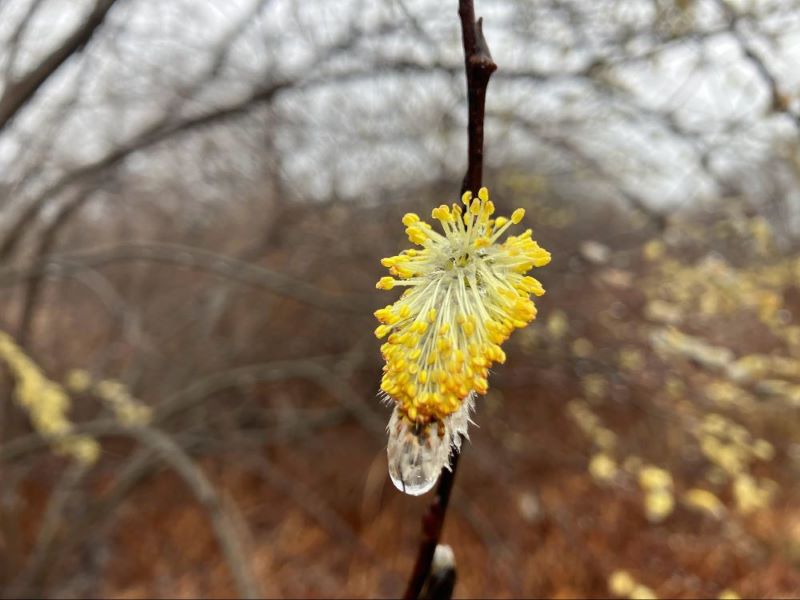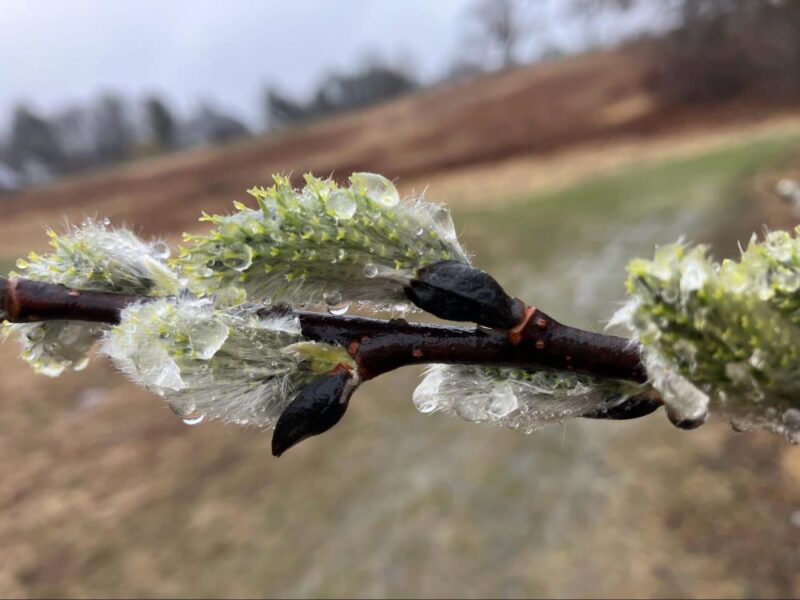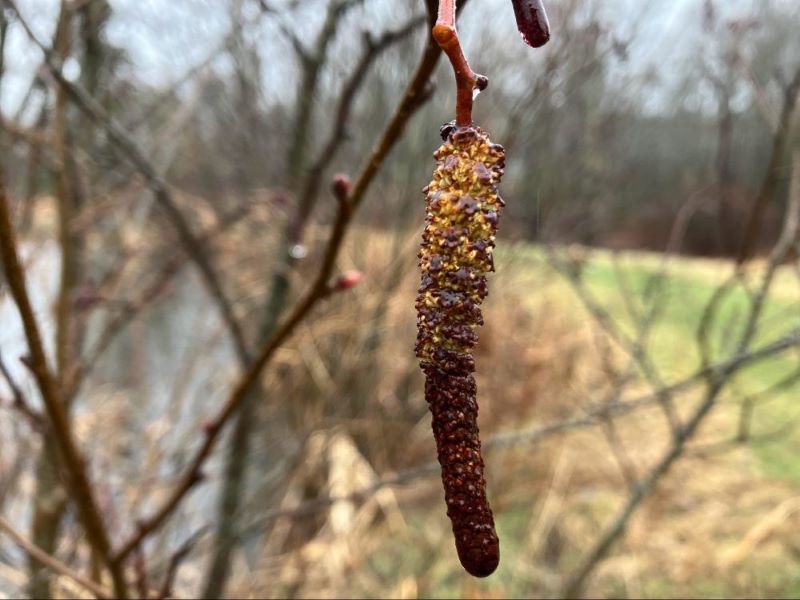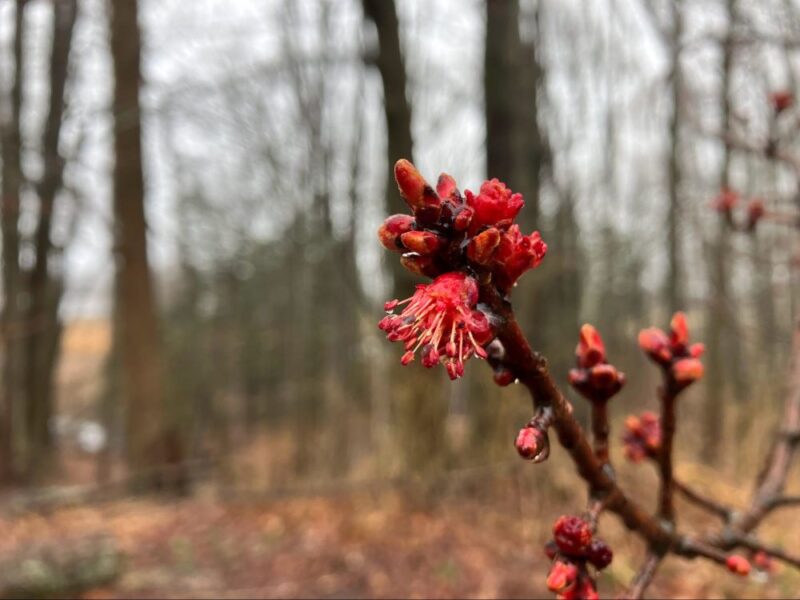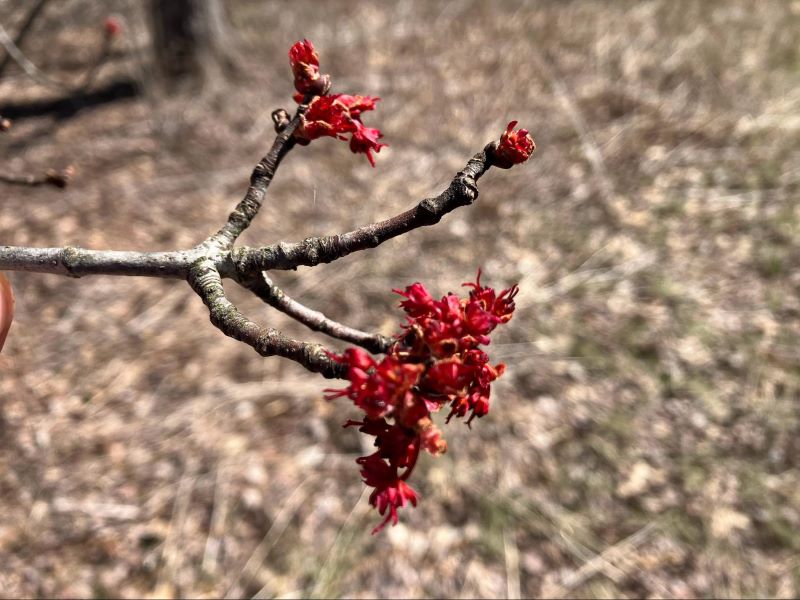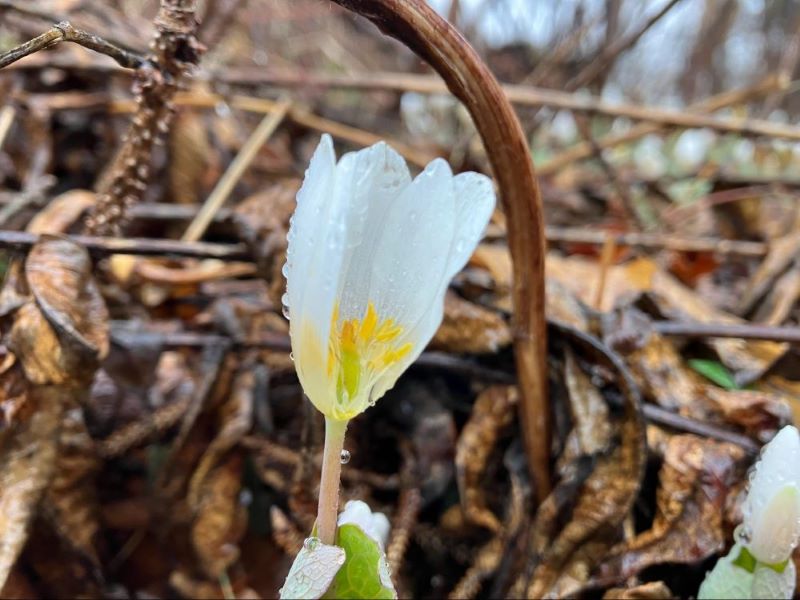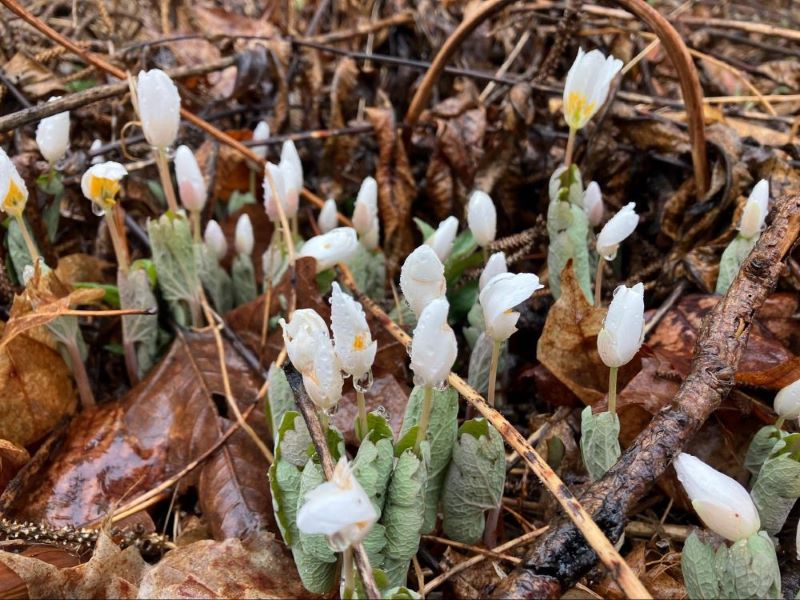
Believe it or not, flowers have been blooming all month at our sanctuaries in southern Maine. These earliest blooms can be divided into two groups: the earliest blooms, mostly trees or shrubs, geared towards wild-pollination, and the first ephemeral wildflowers, herbaceous species that take advantage of the lack of tree canopy and resultant sun in the late spring.
The most prominent shrubs and trees blooming during April are maples, alders, willows, and hazels. Willows are often the first, especially Pussy Willow, sometimes emerging during warm spells in winter. This species is diecious, meaning pollen- and ovule-producing flowers occur on separate individual plants, which is easy to observe on mature flowers: the pollen-covered flowers appear yellow, while the growing ovaries appear light green.
Alders and hazels are usually next, but are quite inconspicuous! Both groups have similar arrangements of long pollen-producing (male) catkins, with smaller arrangements of ovule-producing (female) flowers above. These ovule-producing flowers have striking magenta styles that extend outward to catch the wind-borne pollen.
Around the same time, Red and Silver Maple flowers emerge. These species can have male and female flowers on the same or separate plants, but generally have unisexual flowers. These flowers are mostly wind-pollinated, but are also visited by early pollinating insects. You’ll notice a similar magenta style on the female flowers.
Bloodroot is generally the first native ephemeral flower to bloom, and we have a large patch of it by our Outdoor Classroom at Gilsland Farm. These ephemeral flowers aim to attract insect pollinators, evidenced by their large and showy blooms. Bloodroot has “perfect” flowers with both pollen- and ovule-producing flowers: if you look closely, you can see the yellow, pollen-covered flowers surrounding the green ovary. This is the first of many ephemeral flowers soon to bloom, including trilliums, toothworts, and Trout Lilies.
Keep an eye out for these species in the next few weeks, so you can witness this seasonal spectacle before it disappears until next spring.

